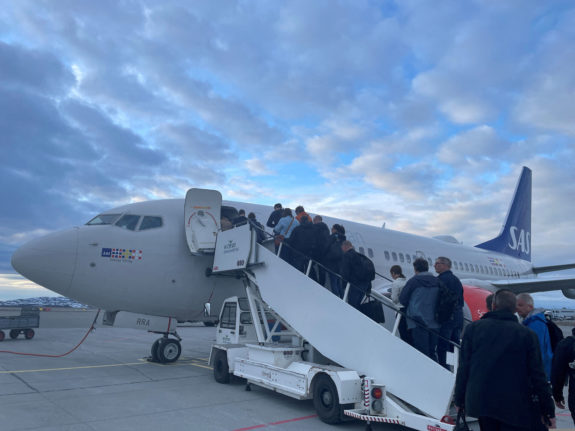2.4 million people travelled with SAS in June, which is an increase of 200,000 passengers from May and the highest number since before the coronavirus pandemic, according to the Scandinavian airline.
The increase in passengers was during a month of delays and cancellations at Copenhagen airport due to a conflict between the state-owned company Naviair and air traffic controllers.
A shortage of air traffic control staff which can be traced to layoffs during the Covid-19 pandemic resulted in existing staff being asked to take on a large amount of overtime. They eventually refused to take on more shifts, saying the workload was unsustainable. Naviair and the air traffic controllers’ union, Datca, entered into an agreement in mid-June.
“The air traffic control service’s capacity problems in Copenhagen continued in June with a major impact on SAS, as Copenhagen Airport is our most important hub. For SAS, one out of four flights that experienced operational disruptions in June were due to these problems”, SAS CEO, Anko van der Werff, said.
READ MORE: Which EU countries are the cheapest holiday destinations for residents of Denmark?
However Jacob Pedersen, head of equity analysis at Sydbank, told newswire Ritzau that he believed a larger part of SAS’s delays in June were not related to the air traffic control dispute.
On Thursday, the airline Norwegian announced that it would buy fellow airline Widerøe for 725 million Danish kroner. Pedersen warned that this could be a challenge for SAS as the two companies together will create a strong player on the Norwegian market for domestic flights.
“Norway is SAS’s biggest market, so it is very important that you get a good response”, Pedersen told Ritzau.
In April, Danish newspaper Berlingske reported that there were plans for delisting SAS from the stock exchange.
In February, the crisis-hit airline posted a net loss of 2.7 billion kronor ($260 million) from November to January, despite a boost in passenger numbers.
SAS filed for Chapter 11 bankruptcy proceedings in the United States in July last year – a move allowing a company to restructure its debts under court supervision. The airline said it hoped to complete the process by the second half of 2023, and projected that it would see positive earnings before taxes by its 2024 fiscal year.



 Please whitelist us to continue reading.
Please whitelist us to continue reading.
Member comments